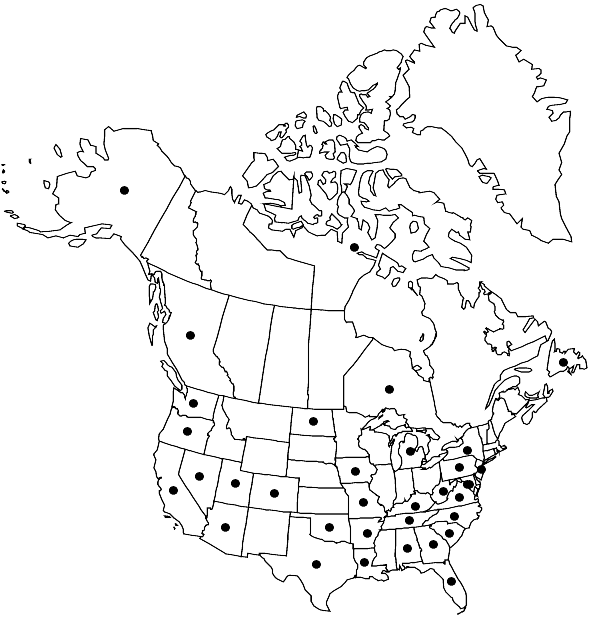Tortula muralis
Sp. Musc. Frond., 123. 1801,.
Leaves ovate or elliptic to obovate, apex broadly acute to rounded or emarginate, short- to long-awned, margins narrowly recurved or revolute to near apex, commonly bordered distally with 2–4 rows of thicker-walled, papillose to smooth cells; costa long-excurrent, lacking an adaxial pad of cells, distally narrow, 3–4(–6) cells across the convex adaxial surface; distal laminal cells hexagonal, 10–15 µm wide, 1:1, strongly papillose with 2(–4)-fid papillae. Sexual condition autoicous. Sporophytes exerted. Seta 0.6–1.5 cm. Capsule stegocarpic, not systylius, cylindric, erect and nearly straight, urn 1.5–2.7 mm; peristome 300 µm, teeth of 32 filaments twisted 1/2–2 times, basal membrane low, to 50 µm; operculum 0.6–1 mm. Spores 8–12 µm, spheric, finely papillose or essentially smooth.
Phenology: Capsules mature spring–summer.
Habitat: Calcareous rock, often on bricks or walls
Elevation: low to moderate elevations
Distribution

B.C., Nfld. and Labr. (Nfld.), Nunavut, Ont., Ala., Alaska, Ariz., Ark., Calif., Colo., D.C., Fla., Ga., Iowa, Ky., La., Md., Mich., Mo., Nev., N.J., N.Y., N.C., N.Dak., Okla., Oreg., Pa., S.C., Tenn., Tex., Utah, Va., Wash., W.Va., West Indies, s South America, Europe, Asia, Africa, Atlantic Islands, Pacific Islands (New Zealand), Australia.
Discussion
Tortula muralis, T. brevipes, and T. plinthobia form an apparently intergrading cline in sporophyte characters, sexual condition, and elaboration of the leaf border. There may be evolutionary advantages associated with such variability, but specimens are occasionally difficult to name satisfactorily. The laminal border of 2–4 rows of thicker walled cells is usually hidden in the margin recurvature except at the leaf apex.
Selected References
None.